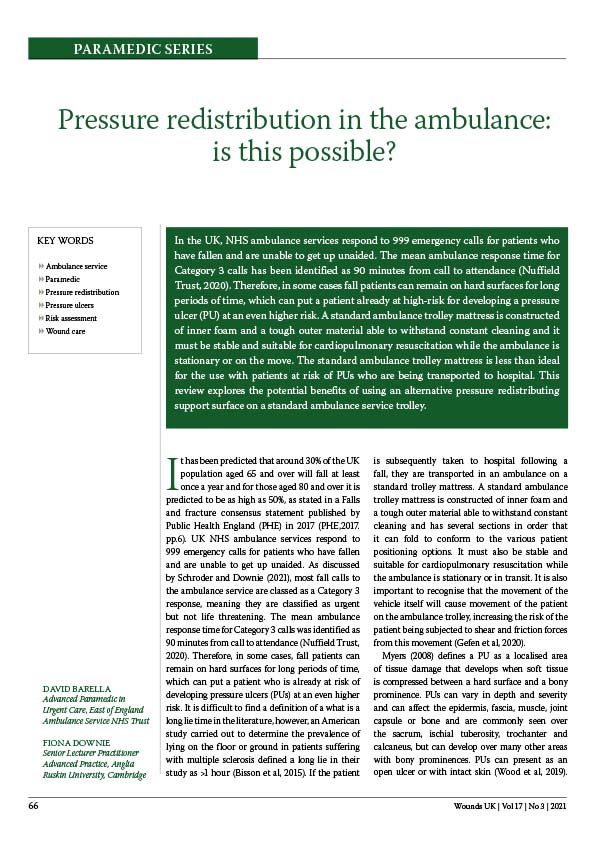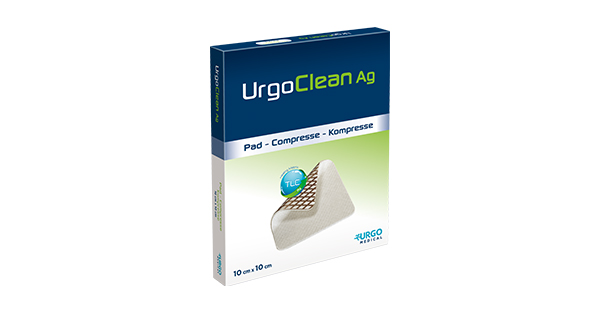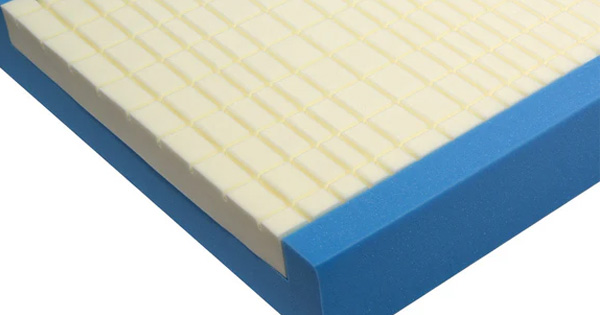In the UK, NHS ambulance services respond to 999 emergency calls for patients who have fallen and are unable to get up unaided. The mean ambulance response time for Category 3 calls has been identified as 90 minutes from call to attendance (Nuffield Trust, 2020). Therefore, in some cases fall patients can remain on hard surfaces for long periods of time, which can put a patient already at high-risk for developing a pressure ulcer (PU) at an even higher risk. A standard ambulance trolley mattress is constructed of inner foam and a tough outer material able to withstand constant cleaning and it must be stable and suitable for cardiopulmonary resuscitation while the ambulance is stationary or on the move. The standard ambulance trolley mattress is less than ideal for the use with patients at risk of PUs who are being transported to hospital. This review explores the potential benefits of using an alternative pressure redistributing support surface on a standard ambulance service trolley.







